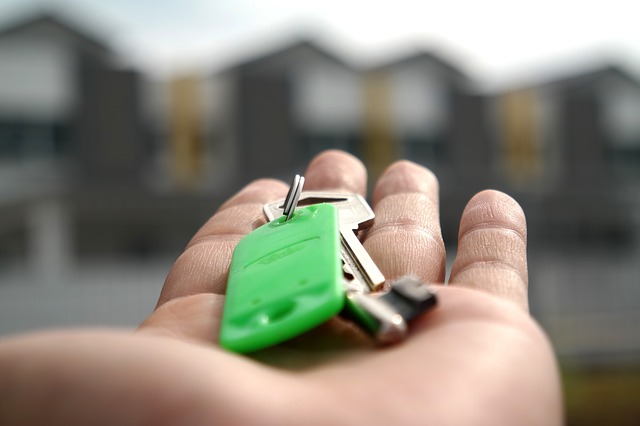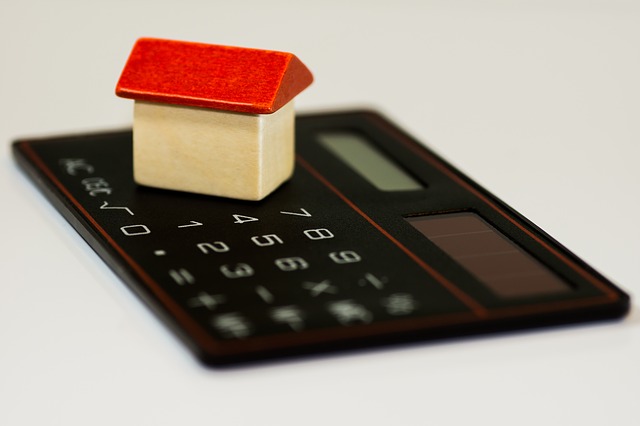Shopping for a home is exciting! Home ownership can be a great investment, but not all of us can afford that investment out-of-pocket. When looking for a mortgage, it is important to rate shop. Different banks will offer different loan products and mortgage rates. Besides variability between lending institutions, rates will fluctuate based on location, loan term, buyer qualification, and general economic factors. A great place to start is with your local Chase branch as Chase mortgage rates are competitive and Chase offers a large variety of loan products.
Understanding Chase Mortgage Rates

Image by mastersenaiper from Pixabay
When it is time to purchase a home, most of us will have to mortgage the property. It is important to understand how your mortgage rate affects the balance of your loan. Chase mortgage rates are competitive and versatile, depending on the loan product you apply for. Current Chase mortgage rates range from 4.25% for a 15 year fixed rate to 5.375% for an adjustable rate mortgage.
While it doesn't seem like half a percentage point is very much, when we consider how interest is calculated and the high quantity of the principal balance, that money adds up. The lower your interest rate, the less overall money you will pay over the course of your loan. The same is true of shorter loan terms. Speak with your Chase banker to figure out how much money you can comfortably afford on housing expenses, and work backward from there.
When Do I Need a Mortgage?

Photo by rawpixel.com from Pexels
A home purchase is likely the largest purchase a person will make in their life. Most of us don't have such large sums of money on hand, and saving that money is difficult while also paying rent and other expenses. The mortgage lending system allows people to purchase a home on a payment plan. Any time you purchase real property with borrowed funds, you will be taking a mortgage against that property.
Mortgage 101
A mortgage is a lien that a bank places on your home in exchange for a purchase loan. When you mortgage a home with a bank, they give you the money to pay for the home and hold your home as collateral until you have paid off the loan. Banks charge interest rates for these loans.
Chase mortgage rates are set based on how much risk the bank is incurring, according to an appraisers opinion. In this economy, with property values stable or rising, the risk is relatively low. When mortgage rates rise, it is generally due to fear of inflation. As the economy grows, inflation causes fixed-income investments to lose value. Chase mortgage rates continue to be competitive despite the overall trend in rising rates. Chase mortgage rates will also vary depending on location. In stronger housing markets, the rates may be more competitive as the investment risk is lower.
How Do I Get a Mortgage?
While shopping for a home, your real estate agent will likely advise you to obtain a pre-approval letter. This is the first step in getting a mortgage. Obtaining a pre-approval will help you understand how much money you can afford and give you an idea of what your loan terms will look like. Once you find your dream home and the buyer accepts your offer, you can go ahead with the full loan application.
By this point, you have likely been working with your banker for a while, and they have probably issued you more than one pre-approval letter. You will get in touch with the point person for your transaction and fill out some paperwork. The bank will require some documents from you, including the Purchase and Sale agreement for the home.
Once the loan application is approved, the process moves to underwriting. During underwriting, the bank will assess the risk associated with investing in your chosen property. They will send an appraiser out to look at the house, they will compare the house against similar properties in the area, and they will take an overview of the general market. Once they value your house at or above the agreed upon sale price, they will issue what is called a commitment letter. This letter lets the sellers know that the funds will be made available to close on the house. Once you reach the closing table, those funds pass to the seller, and you mortgage your home in exchange for the loan of those funds.
In order to get a mortgage, you will generally need stable credit, employment, a low debt to income ratio, and a down payment. If you are planning on taking the step into homeownership, try to pay down large debts well before you apply for a mortgage. Keep in mind that banks will be vetting you as a candidate by looking at your fiscal habits. The less debt you carry, the better.
What Types of Mortgages Are There?
There are many different mortgage loan products on the market, but they can be classified as either fixed-rate or variable rate loans. Chase offers conventional loans, FHA loans, variable rate loans, and many other products. It is best to consult a Chase banker to understand the full range of options for your situation. Chase mortgage rates will be different depending on the loan type, duration, and mortgage points purchased.
Fixed Rate
Adjustable Rate
Real Life Examples
Can I Guarantee a Low Rate?

Image by Alexander Stein from Pixabay
It is possible to lock Chase mortgage rates if you know you will be buying soon. Typically, Chase mortgage rate locks are for 30 to 90 days. Chase mortgage rate locks protect you from being stuck with a much higher mortgage rate than you had anticipated at the beginning of your home search.
In addition to rate locks, you may also purchase points. This means that you front money at the beginning of your loan, with 1 point being equal to 1% of the mortgage loan amount. Each point purchased will lower your Chase mortgage rate by .25%. If you were purchasing a home at $250,000 and bought one point off of a quoted interest rate of 4.5%, you would end up fronting $2500 and paying interest at 4.25%. Over the life of a thirty-year loan, this would save you $13,270 in interest! One caveat to purchasing points is that there is usually a limit on how many you can buy.
Conclusion
A: Sinead can consider an adjustable rate mortgage, with either a 5 or 7 year fixed rate period. She will be able to get a lower Chase mortgage rate with this product than with a fixed rate loan, and her payments will be reasonable. She will be selling the property in 5 years, so she will never have to face the hike in interest. In the event she does not sell, she can refinance the property with a different loan product.A: Tom and Kathy should consider a fixed rate loan. Depending on how much money they have a month, they can choose the loan term. The shorter their loan term, the less money they will pay in interest. Since they plan on staying in this property for the long haul, a 20 or 30-year mortgage makes sense, and a fixed rate product protects them from an increase in housing expenses.
There are a lot of factors that affect Chase mortgage rates. Obtaining a mortgage with a low rate can mean the difference between affording your dream home and continuing to rent. There are a lot of things to consider when you buy a home, and the interest rate is one of the most important factors of your loan. Once you decide how much money you are willing to spend on housing each month, for the foreseeable future, speak with a banker to lock in your Chase mortgage rate. Chase bankers will go over your situation and offer the best loan product for your situation, but don't forget to ask about the other options. It is important to compare the actual numbers of different scenarios before you settle on any mortgage product.
Featured Image by Shahid Abdullah from Pixabay
Leave a Reply